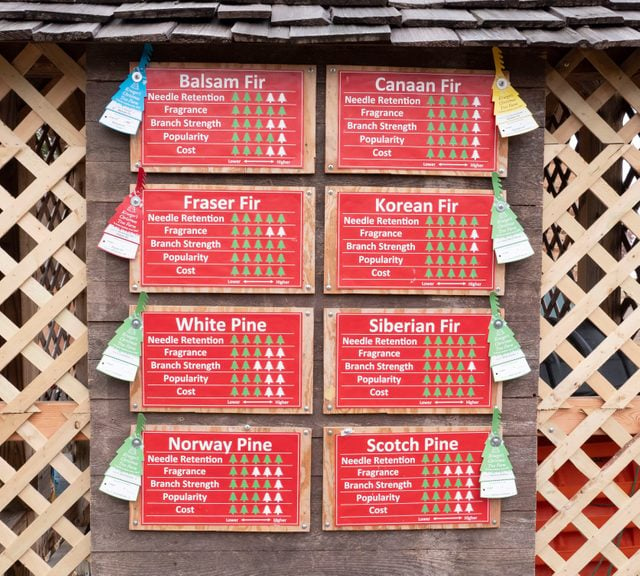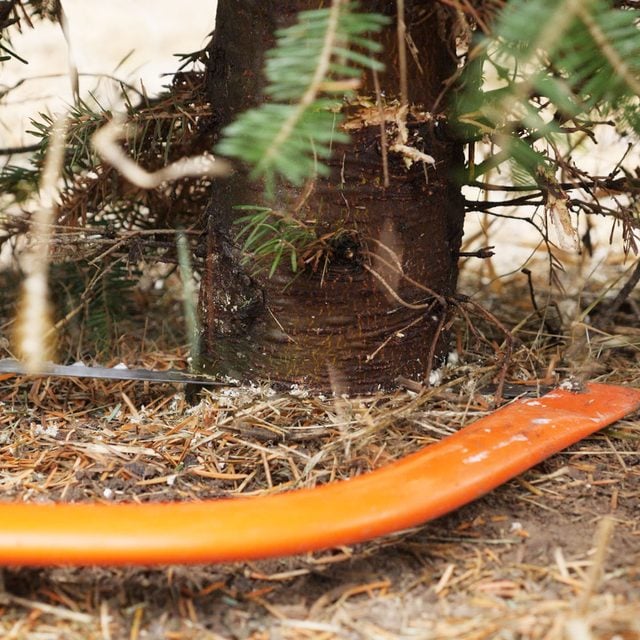Cut your own Christmas tree this holiday season. It’s the perfect opportunity for a fresh air adventure and connect with nature.
A few hours
Beginner
$50 -120
Introduction
Cutting down your own Christmas tree is a joyous holiday tradition. It’s the perfect opportunity to get outdoors for a fresh air adventure and to connect with nature. There is no better way to kick off the holiday season with friends and family.
Some might think it’s not good for nature and the environment, but really, it’s OK. Artificial trees are convenient but typically last less than a decade before going to the landfill. A real tree can usually be found on a local tree farm where it provides natural wildlife habitat and clean air, and prevents soil erosion. They grow for an average of eight years before being harvested. Completely biodegradable and recyclable, they have far less impact on the environment than an artificial tree.
Some state and national forests do allow cutting for Christmas trees. If you decide to go for this full-on outdoor experience, be sure to check on regulations and possible permits.
Watch How to Cut Your Own Christmas Tree
Tools Required
- Hand saw
- Tarp or drop cloth
Materials Required
- Twine or rope
Project step-by-step (7)
Before You Leave the House
- Find a tape measure and note the dimensions of the space where you want your Christmas tree.
- Pro Tip: The height and width of the intended space inside your home are important, but also consider the measurements of doorways and passageways leading to it. Be sure to bring that tape measure with you when you venture out to cut your tree.
- Most tree farms provide a saw to cut down the tree and twine to tie it to the top of the car to transport home. But if you have a favorite saw and some twine, rope, or tie-downs on hand, throw them in the car just in case.
- Note: Also, not a bad idea to grab a tarp or heavy drop cloth. It can be handy for safely dragging the tree to your car and/or lining the inside of your vehicle if the tree will fit in your car.
- Lastly, check the weather. Dress appropriately and grab some gloves. It’ll likely be cold and possibly wet out there, and you don’t want to let that spoil your fun.

Decide on What Type of Tree
- Tree farms these days feature lots of Christmas tree species. It helps to do some research and have an idea of what type of tree you’re looking for. That decision can be based on the look, cost, quality and supply of the species.
- Note: The more popular species are Balsam, Scotch pine, and Frazier Fir, but don’t overlook lesser-known species. It helps to ask someone at the tree farm what’s best and most available. Most farms should have a map of the location of each species. So get a lay of the land, do a walk-through and select several candidates before cutting.
- Pro Tip: Be aware that people often come and pre-tag their trees earlier in the fall. If you show up shortly before the holiday, there may well be less to choose from.
- Note: The more popular species are Balsam, Scotch pine, and Frazier Fir, but don’t overlook lesser-known species. It helps to ask someone at the tree farm what’s best and most available. Most farms should have a map of the location of each species. So get a lay of the land, do a walk-through and select several candidates before cutting.

Check for Height, Health and Fullness
- Once you find a potential tree, measure it up to be sure it will fit in your house. Be sure to factor in the height of your tree stand.
- Then check to see if the tree is healthy. Look for bald spots, brown patches or dead limbs.
- Note: It’s nice to have a tree full in appearance, but if it’s not perfect in this regard, remember you can always put a lesser side of the tree against a wall in your home.
- Lastly, before cutting, check to see there are no birds’ nests or other critters in the tree.

Cutting
- When cutting the tree, do it close to the ground. This can allow for another tree to potentially sprout from the stump.
- Note: This also makes less work for the tree farmer when he grinds the stump to make space for a seedling.
- When you start cutting, it helps to have someone pull the tree slightly from the opposite side. This prevents your blade from binding as you work your way through the tree. When you are near the end of your cut, have that person hold the tree up so it doesn’t tip over. This allows a clean finishing cut without tearing or splintering the bark.
- Give the tree a shake so any loose debris falls out. If there is fresh snow on the ground, you can drag the tree out with little damage.
- Note: Otherwise you can carry it, or drag it on a tarp or a provided cart or sled.

Bringing it Home
- Many Christmas tree farms will shake, bag and tie your tree to the roof of your car. But if not, keep these things in mind:
- Face the stump forward so the tree isn’t wind damaged on the trip home.
- Thread tie downs or rope through branches to make contact with the trunk and better hold the tree.
- If you can fit it in the car, lay out a tarp or blanket to catch the needles.

Once Home
- If your tree is wrapped up in netting, keep it that way to make it easier getting it into the house.
- Pro Tip: If you’re not putting it up immediately, store it outside; the cold will help preserve it.
- Once you bring it in, give the stump a fresh cut before putting it in the stand. (Less than one inch will do.) This will maximize its ability to draw water.
- Most importantly, keep it watered daily. This is the only way to keep your tree fresh.
- Pro Tip: Check humidity in the house and make sure it’s not too dry. Try to keep the tree away from heat supply vents, radiators and other heat sources that will dry it out. It’s always best to place it on an outside wall and window where it’s slightly cooler.

Preserve the Experience
- If you’ve never cut down a tree before, try it this year. It’s the best way to get outside with friends or family to commence the holiday season.
- Be sure to take plenty of pictures and document what is sure to be a lasting holiday memory.

FAQ
How Long Will a Fresh Cut Tree Last?
The longevity of a Christmas tree that’s freshly-cut largely depends on a few key factors. First, choosing a healthy tree is essential. Look for vibrant, green needles that don’t easily fall off. Second, proper care plays a crucial role. Once you’ve selected your tree, make a fresh cut at the base and place it in water as soon as possible. Keep the water reservoir of your tree stand full at all times. Fresh water is the key to preserving the tree’s vitality. Generally, a well-cared-for fresh-cut tree can last anywhere from three to six weeks. Regularly checking the water level and maintaining a comfortable room temperature can extend its festive appearance throughout the holiday season.
Where Can I Cut My Own Christmas Tree?
Many Christmas tree farms offer the “cut your own” experience, allowing you to choose and cut down your tree right on the spot. Some national forests also permit Christmas tree cutting with the proper permits. The key is to do your research and find a local tree farm or forest that allows this tradition. Ensure you have the right tools, such as a saw, gloves, and sturdy clothing, to make the task easy and enjoyable. Remember, the process of cutting your own tree can be a wonderful Christmas tradition for the whole family.
Can I Cut Down a Christmas Tree On My Property?
In many cases, you can cut down a Christmas tree on your own property, but there are some essential considerations to keep in mind. First, ensure you actually own the property and have the legal right to remove a tree. Some homeowners’ associations may have specific rules regarding tree removal, so it’s a good idea to check with them. Next, assess the size and health of the tree you plan to cut. You should avoid removing any tree that’s essential to the ecosystem or part of local regulations. If you get the green light, proceed with the right tools, safety precautions, and a plan to clean up properly.
Can You Replant a Cut Christmas Tree?
Replanting a Christmas tree is a challenging endeavor, and while not impossible, it’s essential to set realistic expectations. Christmas trees are typically cut with their roots intact, but they often face a difficult transition indoors where it’s warmer and there’s limited access to water. Replanting one indoors may not always succeed, but you can attempt to salvage it.
The key is to act quickly. Keep the tree indoors for only a short period, ideally no more than a week. Afterward, move it to a cool, sheltered outdoor location. You’ll need to plant it in well-draining soil, provide plenty of water, and protect it from harsh weather conditions. Success can be hit or miss, but it’s a noble effort in promoting sustainability. If your tree doesn’t make it, consider recycling it through a local tree disposal program to give it a second life as mulch or wood chips.




















